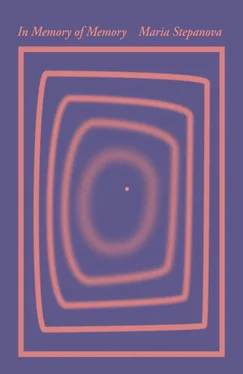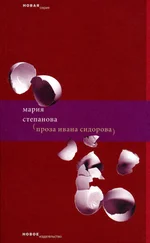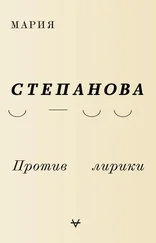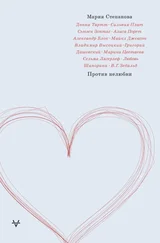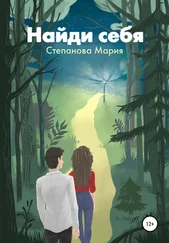8.
A floor-length black skirt and a light blouse: an unknown woman standing in front of a fence. An ivy-clad brick house, the painted shutters open. Two children, of about two and five, flicker at her shoulders like wings. She is holding their hands, and her hands are crossed over her chest. Two men stand to each side, slightly closer to us. One is taller and he stands with his legs crossed, his hands thrust in his pockets — his shirt is belted, not tucked in, his curls are ruffled. This is Sashka, or Sancho Pancho , a friend and an admirer of my great-grandmother Sarra. The other man is older. He is wearing a pince-nez and a blouse made of coarse material. He has a gloomy expression and I suddenly realize that I recognize his face. Yakov Sverdlov. Ten years later in 1917 he becomes the Chairman of the All-Russia Central Executive Committee and signs a decree beginning the Red Terror and “the turning of the Soviet Republic into a single military camp.”
9.
A dim yellow rectangle, a little brighter in the left-hand corner, but you can just about make out a table, a shoulder, a woman in profile. On the back, a note: “Don’t let it put you off that the picture is so dark, it’s not too bad if you take a good look.” A little lower in the corner, same handwriting: “Paris.”
10.
The first thing you notice are the words on a banner against a backdrop of endless birch trees:
FOR BEAUTY AND HEALTH IN WORKING LIVES
THE WAY AHEAD IS EXERCISE!
The lower part of the picture is such a tangle of women’s bodies that the eye directs itself involuntarily to a point above their heads, to the regular white letters and tree trunks. The composition of women’s bodies looks like a complex chemical equation. The upper row is standing tall and each subsequent row is squatting a little lower than the last, the final row lying spread out like mermaids in a sea of arms, PE knickers and identical PE shirts. About ninety women in all, but all their faces look surprisingly similar, or perhaps they all wear the same blankness, the same refusal to allow any expression to cross their faces. For this very reason I look at each individual face, and as I move between one woman and the next, I appear to see the different phases of a single mimetic movement. This is the Raiki Holiday Camp where Great-Grandmother Sarra worked as a doctor in around 1926. Her ten-year-old daughter Lyolya is lying in the front row, a long plait extending from her head and an absurd-looking fringed shawl on her shoulders. To make her easy to find, our Lyolya, someone’s added a blue-inked cross over her head. But you could just as easily tell her apart by her estrangement from the scene, how she looks away and to one side.
11.
Heavy card, a golden surround, a backdrop with a misty landscape — against it, the fat-pawed iron bench with its fancy wrought armrests looks particularly squat and solid. David Fridman, a doctor and the father of my great-grandfather, sits on the bench, his hand rests on the collar of an Irish red setter (the breed standard for this type of setter had been set only twenty years before the picture was taken, in Dublin, in 1886). The clothes he wears are almost unnoticeable, begging not to be scrutinized: a good overcoat with an astrakhan collar, a matching black astrakhan hat, unremarkable trousers, even more unremarkable shoes, a pince-nez on a long chain, which only serves to focus attention on his troubled eyes. But perhaps it is not the eyes that give the impression of a troubled man, but rather the legs, held close together, as if he was just about to get up and leave. In our family we keep the common custom of sitting down briefly before the road, half a minute’s respite to allow the journey to assume its proper proportions. The dog is nervy, it stirs. Both dog and man die in 1907, on the same day, or so my mother told me.
12.
A portrait photograph, just a face and nothing else — but my goodness, what a face: a long beard spreads into two points on the chest; the nostrils are flared wide; brows drawn together, and above them a head that appears bald despite its gray fuzz. There’s no backdrop, just absence. This is Abram Osipovich Ginzburg, my other great-great-grandfather, the father of fourteen children, a merchant of the 1st Guild, the highest rank a merchant could achieve. He started his business in Pochinky, although he is not mentioned in the local archives, and in this picture he resembles “a God-Sent Tempest.” The eyes are the first thing you notice in an old picture: they seem lost because their gaze is searching for a person who is no longer there, a person who once recognized them. But his gaze in this photograph is directed to the side — it’s not a searching gaze, he has already fixed someone or something in his sights. You are drawn almost against your will to put yourself in their place, out of frame, in a space where nothing has been visible for a long time. The actual composition of the photograph, where your attention had been hitherto wandering, seems suddenly a cramped little triangle, and everything in it is regulated by that fiercely unbending gaze.
13.
A beautiful woman, wearing white, and a little boy in a sailor suit who looks like her. She is sitting and he is standing by her armchair. The white is a class signifier, a sign of affluence, of the creak of starched cloth and unlimited leisure. The boy is about six, his father will die two years later, in another three years he and his mother will find themselves in Moscow, who knows how, perhaps washed up in a basket of reeds, like Moses. I have on my shelf an old typewriter, a heavy Mercedes with the prosthetic jaw of a second keyboard. Betya took on any job she could find when she first came to Moscow, mostly typing work.
14.
A large copy (approx. 20cm by 30cm) of an old photograph, on the back: “1905. Left to right: Ginzburg, Baranov, Galper, Sverdlova. The original is in the Gorky Memorial Museum No. 11 281. Research Associate Gladinina (?) A round blue stamp above the number.”
It’s winter and the snow under their feet is trampled. Dark, shaggy fur coats and hats with a spotting of white — the usual smudging you get on an old photograph, the dots and lines that obscure the picture. Great-Grandmother Sarra, first on the left, looks older than her seventeen years. Her hat, the sort that’s fastened with pins, has slipped to the back of her head, a strand of hair has escaped and her round-cheeked face is red raw, you can see how cold she is. One of her hands is tucked into her coat’s cuffs, another is balled into a fist. Her right eye, injured on the barricades, is covered with a black bandage, like a pirate’s patch. This was in Nizhny Novgorod, the barricades were built during the uprising that began on December 12, 1905, and was put down by artillery after three days of street fighting.
In our family folklore this photograph is actually called “Babushka on the Barricades,” although of course you can’t see the barricades, just a white brick wall and to the side a little fence engulfed by a pile of snow. When you look carefully you can see how young they all are: the handsome young mustache in his gray fur cap, and Galper, with the prominent ears, whom I do not know, and her friend, with the childish face and high cheekbones. Sixty years later only the women have survived in the archival memory: Sarra Ginzburg and Sarra Sverdlova (“little Sarra”), the sister of Yakov Sverdlov, sitting on the bench outside the “Home for Old Bolsheviks,” two gray-haired old ladies in thick coats, warming themselves in the winter sun, pressing old-fashioned muffs to their stomachs.
15.
Morning on the open terrace of a dacha: someone is sitting in a wicker chair but all you can see are legs and the corner of a striped dress. An oilcloth over the table, and on it a cornucopia of china dishes, cups, sugar bowls, the old yellow butter dish, a tall vase filled with flowers and foliage, and beyond that a saucepan, but the contents aren’t visible. A girl in a summer dress is eating breakfast fastidiously. Her elbows are resting on the corner of the tablecloth, her right hand holds the knife, and in her left hand, the fork. Her feet, in fashionable shoes (rounded toes and little ankle straps), rest on the bar of the chair. The second girl, sitting opposite her, is bent over her teacup, stirring in sugar. Her suntanned knees stick out from under her skirt, her bare arms reflect the light, her hair is drawn up under a hairnet. An older woman in an apron, encased in a blinding white scarf, is watching Lyolya from afar to make sure she gets a good breakfast. This is Nanny Mikhailovna, who attached herself to the family and never left. It must be about 1930. There’s a pile of papers and on the top a copy of the weekly Ogoniok , with a faint outline of a woman on the cover. You can’t quite tell what the woman is doing.
Читать дальше
